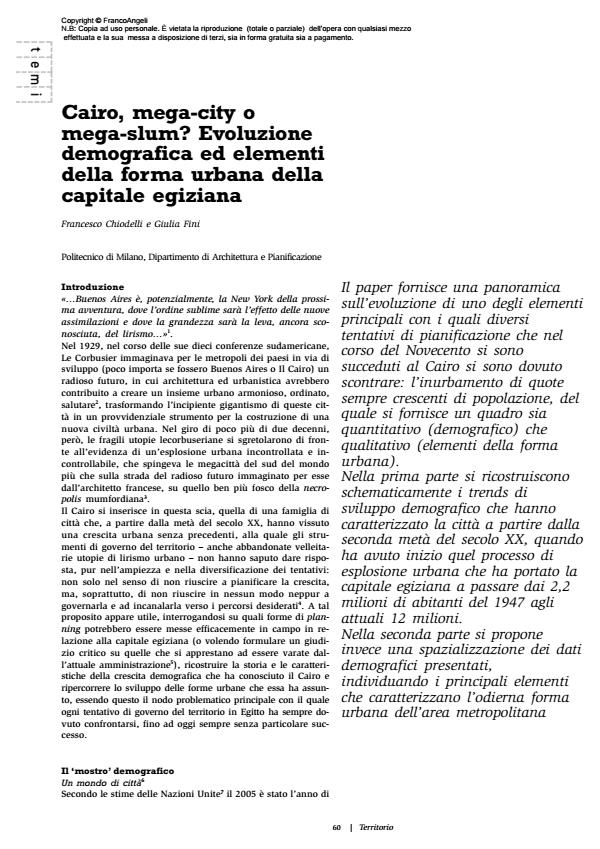Cairo, mega-city o mega-slum? Evoluzione demografica ed elementi della forma urbana della capitale egiziana
Titolo Rivista TERRITORIO
Autori/Curatori Francesco Chiodelli, Giulia Fini
Anno di pubblicazione 2009 Fascicolo 2009/50
Lingua Italiano Numero pagine 13 P. 60-72 Dimensione file 1198 KB
DOI 10.3280/TR2009-050008
Il DOI è il codice a barre della proprietà intellettuale: per saperne di più
clicca qui
Qui sotto puoi vedere in anteprima la prima pagina di questo articolo.
Se questo articolo ti interessa, lo puoi acquistare (e scaricare in formato pdf) seguendo le facili indicazioni per acquistare il download credit. Acquista Download Credits per scaricare questo Articolo in formato PDF

FrancoAngeli è membro della Publishers International Linking Association, Inc (PILA)associazione indipendente e non profit per facilitare (attraverso i servizi tecnologici implementati da CrossRef.org) l’accesso degli studiosi ai contenuti digitali nelle pubblicazioni professionali e scientifiche
Cairo, mega-city or mega-slum? Demographic trends and elements of the urban form of the Egyptian capital - The paper gives an overview of the development of the main elements which various attempts at planning in the twentieth century had to face up to: the urbanisation of increasingly greater proportions of the population for which the quantitative (demographic) and qualitative (elements of the urban form) framework is given. The first part schematically reconstructs the demographic trends for the city since the middle of the twentieth century, when the urban explosion commenced which brought the population of the Egyptian capital up from 2.2 million in 1947 to twelve million today. The second part looks at the distribution of the population in space, identifying the main elements that characterise the present day urban form of the metropolitan area.;
Francesco Chiodelli, Giulia Fini, Cairo, mega-city o mega-slum? Evoluzione demografica ed elementi della forma urbana della capitale egiziana in "TERRITORIO" 50/2009, pp 60-72, DOI: 10.3280/TR2009-050008